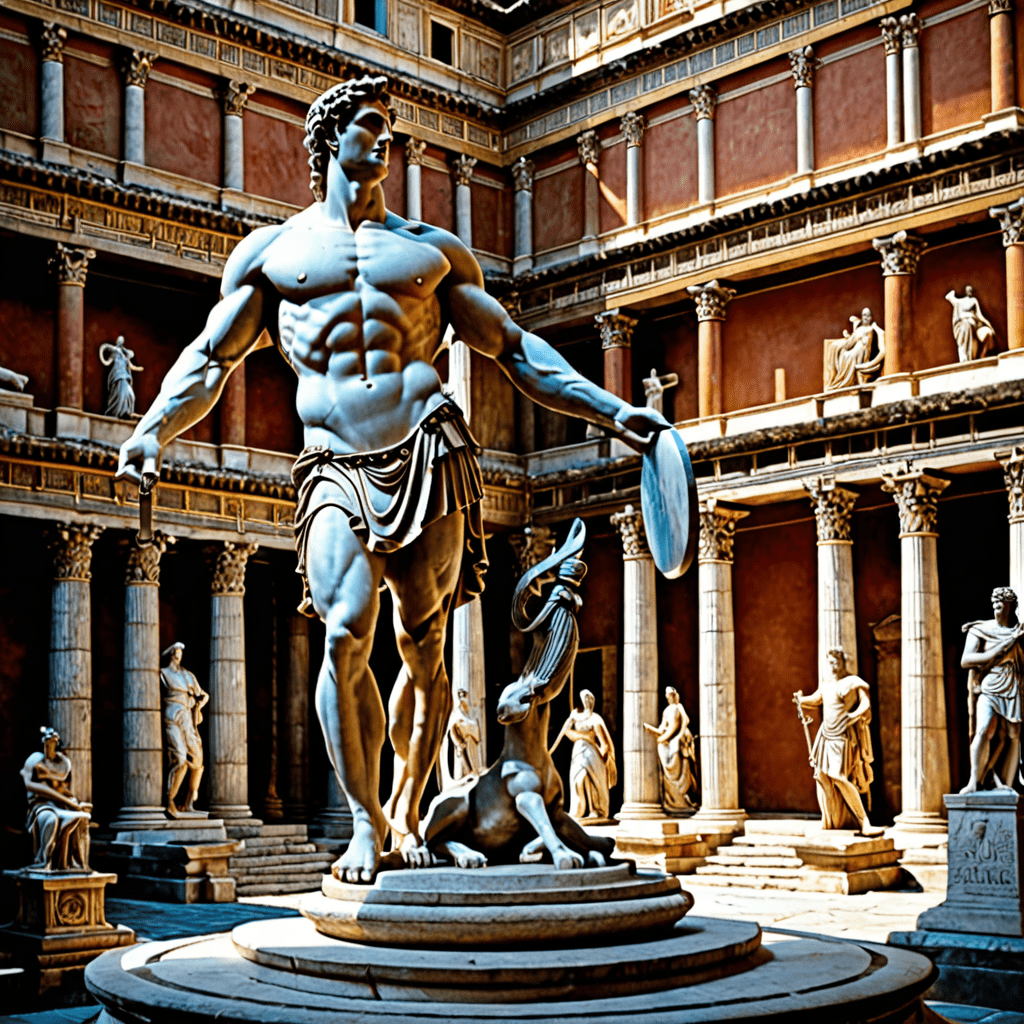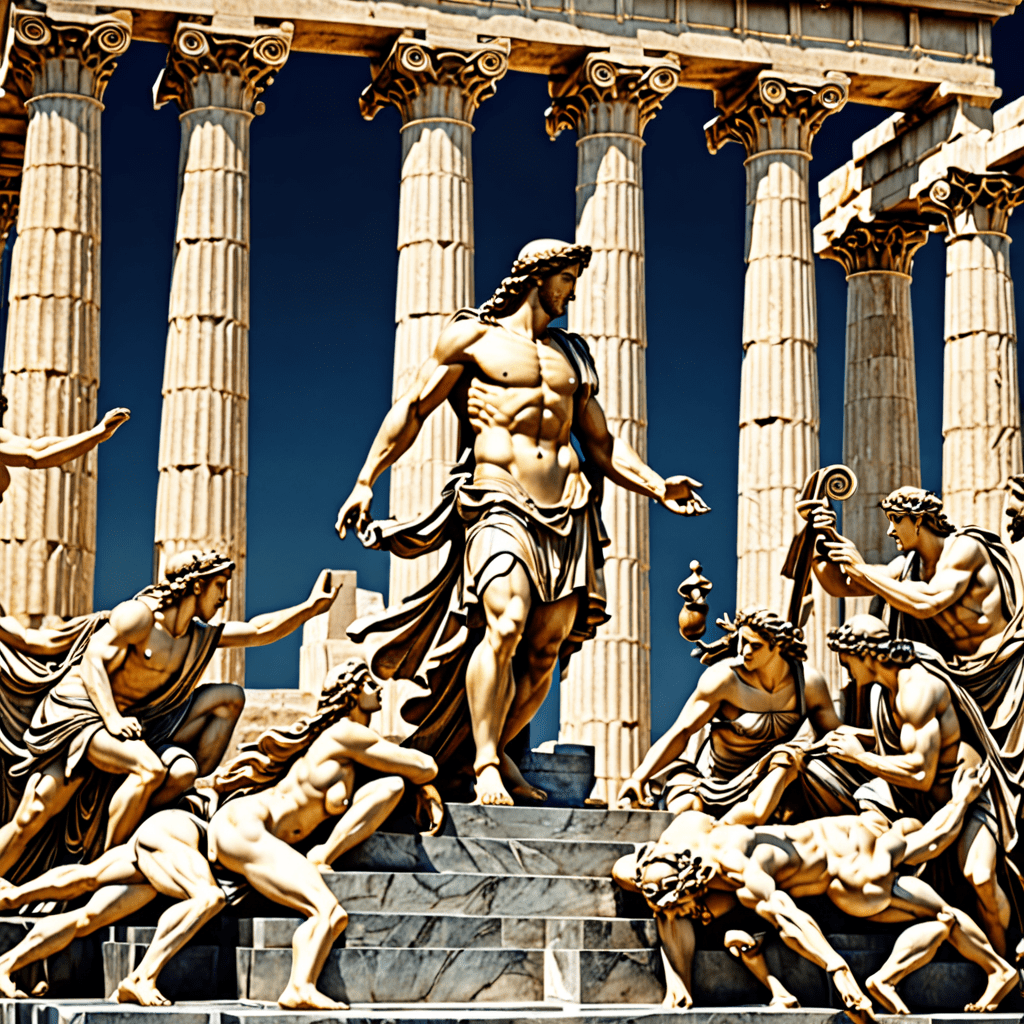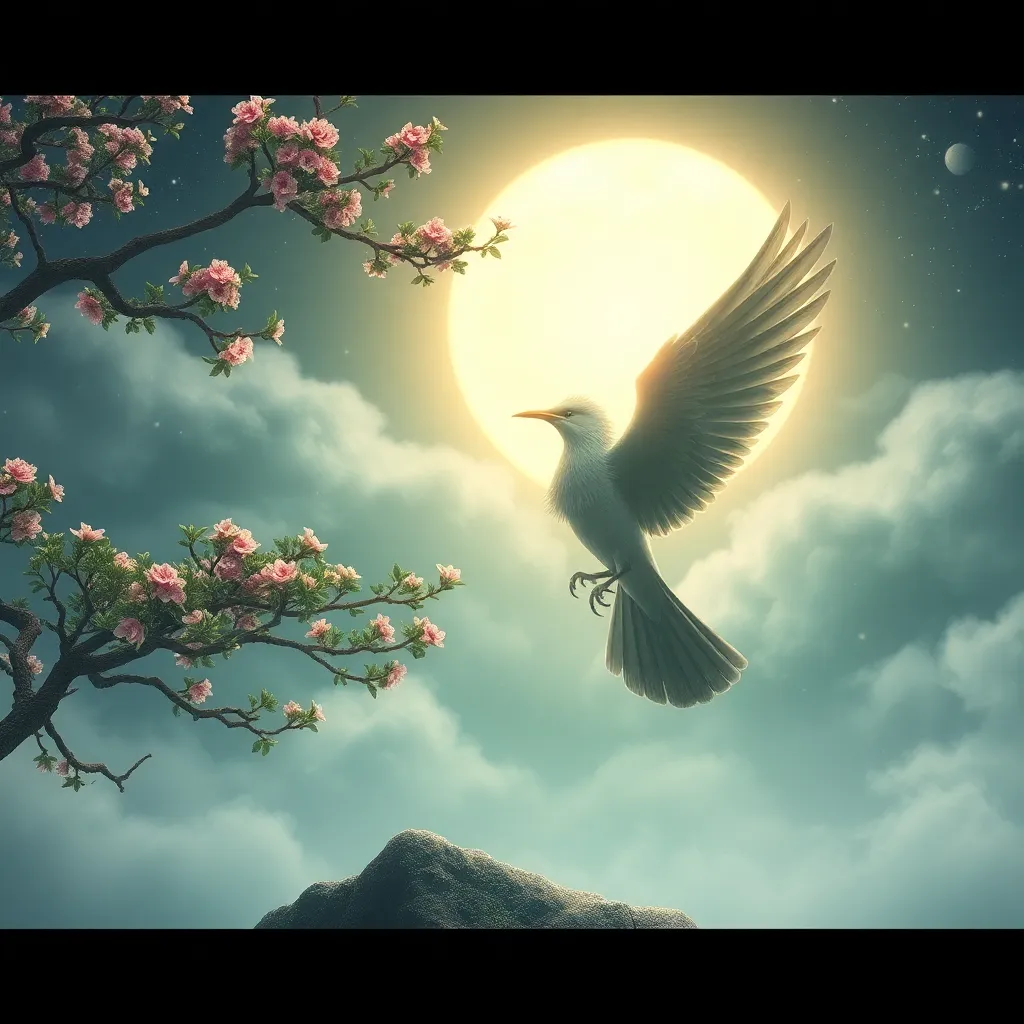The Ancient Gods and Goddesses of the Baltic Region
Baltic mythology, a rich tapestry of stories and beliefs, has its roots in the ancient cultures of the Baltic region, encompassing modern-day Latvia, Lithuania, and Estonia. Unlike some other mythologies, Baltic mythology doesn't have a single, definitive pantheon of gods and goddesses. Instead, it features a diverse array of deities, each representing different aspects of nature, human life, and the cosmos.
Central to Baltic mythology is the figure of Dievas, the supreme god, often associated with the sky, thunder, and the power of creation. Dievas is not a benevolent god but reflects the unpredictable nature of the world – both destructive and life-giving. Alongside Dievas, a complex web of other gods and goddesses play vital roles. Perkūnas, the god of thunder and lightning, is a powerful figure associated with might, justice, and protection. Laima, the goddess of fate and destiny, holds sway over human lives, and Saulė, the sun goddess, embodies life and warmth.
The Baltic pantheon also includes gods and goddesses representing specific natural forces, such as Medeina, the goddess of forests, and Jūras, the god of the sea. Other deities, like Velnias, the trickster god who represents chaos and mischief, embody forces that challenge the established order.
The Baltic gods and goddesses are not viewed as distant, aloof beings. Instead, they are deeply intertwined with the lives of humans, their actions influencing the world around them. This close relationship between humans and the divine is a central theme in Baltic mythology.
The Importance of Nature and the Elements in Baltic Mythology
Nature is not just a backdrop in Baltic mythology; it is central to its very fabric. The Baltic peoples, living in a region of forests, lakes, and seas, deeply revered the natural world. Their mythology reflects this reverence, weaving nature and its elements into every aspect of their beliefs.
The sun, moon, stars, and weather patterns are all imbued with spiritual significance. The sun, represented by the goddess Saulė, is seen as a source of life and warmth, essential for the survival of crops and animals. The moon, associated with the goddess Mėnulis, is linked to cycles of growth and decay, and the stars are seen as celestial guides.
Forests, rivers, lakes, and seas are also central to Baltic mythology. The forest, particularly the ancient oak tree, is considered a sacred space, home to various deities and spirits. Rivers and lakes are seen as gateways to the underworld, and the sea, a vast and unpredictable force, is ruled by the god Jūras.
Thunderstorms, with their roaring thunder and flashing lightning, are viewed as manifestations of the power of Dievas and Perkūnas. These natural phenomena are not simply weather patterns but reflections of the power of the gods and their interaction with the world.
The importance of natural elements in Baltic mythology highlights the strong connection between the Baltic people and their environment. Nature is not just something to be exploited; it is a sacred being deserving of respect and veneration.
The Role of Spirits and Supernatural Beings in Baltic Folklore
Beyond the gods and goddesses, Baltic folklore is populated by a rich cast of spirits and supernatural beings, representing both benevolent and malevolent forces. These creatures are integral to the belief system and weave their way into tales, traditions, and superstitions.
- Laumės: These female spirits are associated with nature and fertility. They are benevolent beings who protect homes, families, and the natural world.
- Vėlinės: Often depicted as ghostly figures, these spirits represent the souls of the dead. They are believed to return to their earthly homes during the festival of Vėlinės, a time for remembering and honoring ancestors.
- Ragana: The witch, a powerful figure in Baltic folklore, is often associated with magic, herbal remedies, and divination. While some witches are benevolent, others are seen as dangerous and capable of causing harm.
- Undīne: This water spirit, often depicted as a beautiful woman, lives in lakes and rivers. They can be alluring but are also capable of luring unsuspecting humans to their watery doom.
- Pūkas: This mythical creature, often described as a shapeless, hairy being, is associated with wild places and forests. They are often mischievous and known to play tricks on humans.
These spirits and supernatural beings play a significant role in shaping the landscape of fear and superstition in Baltic folklore. They serve as reminders of the unseen forces at work in the world and the importance of respecting ancient traditions and beliefs.
The Influence of Baltic Mythology on Traditional Festivals and Rituals
Baltic mythology exerted a profound influence on traditional festivals and rituals celebrated throughout the year. These events, often tied to the cycles of nature and agriculture, served as a way to honor the gods, appease the spirits, and ensure the well-being of the community.
- Saulėgrīža: This summer solstice festival, known as Jāņi in Latvia and Lithuania, is a celebration of the sun's strength and power. It involves bonfires, singing, dancing, and the gathering of medicinal herbs, all aimed at ensuring a bountiful harvest.
- Vėlinės: This festival, held in the fall, is a time for remembering and honoring the dead. It involves visits to cemeteries, placing candles on graves, and offering food and drink to the souls of ancestors.
- Kūčios: This Christmas Eve celebration, is a time for family gatherings and sharing traditional meals. It involves a special Christmas Eve dinner with 12 dishes, symbolizing the 12 apostles.
- Užgavėnės: This carnival-like festival, held in February, marks the end of winter and the beginning of spring. It involves masquerades, parades, and symbolic battles, representing the triumph of spring over winter.
These festivals and rituals, rooted in Baltic mythology, are not mere celebrations; they are expressions of faith, tradition, and community. They demonstrate the enduring influence of Baltic mythology on the cultural life and traditions of the Baltic people.
Common Superstitions and Beliefs Rooted in Baltic Mythology
Baltic mythology is deeply embedded in popular superstitions and beliefs that have persisted for centuries. These beliefs, often passed down through generations, offer insights into the fears, hopes, and anxieties of the people.
- Bad Luck Signs: Seeing a black cat crossing your path, spilling salt, or breaking a mirror are all considered bad luck signs. These superstitions stem from the belief that these actions can disrupt the natural order and attract misfortune.
- Protection Against Evil Spirits: Wearing amulets, carrying lucky charms, and performing certain rituals are believed to offer protection against evil spirits and curses. These practices are rooted in the belief that the world is teeming with unseen forces that can influence human lives.
- Dreams and Premonitions: Dreams are often seen as messages from the spirits or gods. Vivid dreams are taken as warnings or predictions of future events.
- Natural Phenomena: Weather patterns, animal behavior, and the phases of the moon are all seen as indicators of the gods' will or as signs of impending events.
These superstitions, while rooted in ancient mythology, continue to influence the daily lives of many people in the Baltic region. They serve as a reminder of the enduring power of myth and its ability to shape human beliefs and behavior.
The Persistence of Baltic Folklore in Modern Culture
While the influence of Christianity in the Baltic region has led to the decline of traditional practices, Baltic folklore persists in modern culture in a variety of ways. Many customs and traditions rooted in ancient beliefs have been woven into modern celebrations and everyday life.
- Folk Music and Dance: Traditional Baltic folk music and dance forms are still popular, preserving the rhythms and melodies of ancient beliefs. These artistic forms offer a glimpse into the world of Baltic mythology through their themes, symbolism, and storytelling.
- Festivals and Events: Many festivals and cultural events throughout the year still incorporate elements of Baltic folklore. From the summer solstice celebrations of Jāņi to the harvest festivals, the traditions and rituals rooted in ancient beliefs continue to be celebrated.
- Literature and Art: Baltic mythology has served as a rich source of inspiration for writers, poets, artists, and composers. From novels and poems to paintings and sculptures, there is a wealth of creative works that explore the themes, characters, and stories of Baltic mythology.
- Modern Mythological Interpretations: In recent years, there has been a growing interest in exploring and reinterpreting Baltic mythology in modern contexts. From graphic novels and video games to contemporary art installations, Baltic myths are finding new life and meaning in modern culture.
The persistence of Baltic folklore in modern culture is a testament to its enduring power and relevance. These traditions offer a valuable connection to the past and provide a rich cultural heritage for the Baltic peoples.
The Role of Storytelling in Preserving Baltic Mythology
Storytelling has always been central to the preservation of Baltic mythology. From ancient times, stories, songs, and folk tales have been passed down through generations, keeping the myths and legends alive in the hearts and minds of the people.
- Oral Tradition: For centuries, Baltic mythology was primarily preserved through oral tradition. Storytellers, known as dainininkai in Lithuanian, would gather people together and share tales of gods, goddesses, spirits, and heroes. These stories were not simply entertainment; they served as a way to teach, inspire, and connect with the spiritual world.
- Folk Songs and Rhymes: Folk songs and rhymes were also important vehicles for preserving Baltic mythology. These songs and poems incorporated mythical themes, characters, and beliefs, often reflecting the daily lives and experiences of the people.
- Folk Tales and Legends: Folk tales and legends were another vital part of the storytelling tradition. These stories often featured magical creatures, supernatural events, and moral lessons. They served as a way to explore the complexities of human nature and the forces that shape our world.
The role of storytelling in preserving Baltic mythology is immeasurable. Through the power of language and imagination, these stories have continued to inspire and enlighten people for generations.
The Impact of Christianity on Baltic Mythology
The arrival of Christianity in the Baltic region in the 13th and 14th centuries had a profound impact on Baltic mythology. As Christianity spread, traditional beliefs and practices were suppressed and often demonized.
- Christianization and Suppression: The Christianization of the Baltic region led to the suppression of pagan practices and beliefs. Temples and sacred groves were destroyed, and traditional festivals and rituals were outlawed.
- Syncretism: While some traditional beliefs were suppressed, others persisted in a syncretic form, adapting to the new Christian framework. Many Christian saints were associated with older gods and goddesses, blurring the lines between pagan and Christian beliefs.
- Perpetuation of Myths: Despite the efforts to suppress them, many Baltic myths and legends survived through folk tales and oral traditions. These stories were often retold in a Christianized form, reflecting the changing social and religious landscape of the region.
The impact of Christianity on Baltic mythology was complex and multifaceted. While it led to the decline of traditional practices, it also contributed to the survival of ancient beliefs in new forms.
Theories on the Origins of Baltic Mythology
The origins of Baltic mythology are shrouded in mystery, with various theories proposed by scholars. While the exact origins remain unclear, there are several key insights into the development of this rich tapestry of stories.
- Indo-European Roots: Many scholars believe that Baltic mythology shares roots with other Indo-European mythologies, such as those of the Greeks, Romans, and Celts. This suggests that some of the core themes and characters in Baltic myths may have originated from a common ancestor language and culture.
- Local Adaptation: While Baltic mythology may have Indo-European roots, it also underwent significant local adaptation as it evolved over time. The unique natural environment of the Baltic region, with its forests, lakes, and seas, played a crucial role in shaping the stories and beliefs of the people.
- Influence of Neighboring Cultures: Baltic mythology is likely to have been influenced by neighboring cultures, including those of the Germanic, Slavic, and Finnic peoples. This cultural interaction contributed to the diversity of themes, characters, and stories found in Baltic folklore.
The origins of Baltic mythology remain a subject of ongoing research. However, by studying the connections between Baltic mythology and other cultures, scholars can gain a deeper understanding of the evolution and development of this rich and complex body of belief.
The Continued Relevance of Baltic Mythology in the 21st Century
In the 21st century, Baltic mythology continues to hold relevance, offering valuable insights into the past, present, and future.
- Cultural Identity: Baltic mythology plays a vital role in shaping the cultural identity of the Baltic peoples. It provides a connection to their ancestors, their history, and their traditions.
- Environmental Awareness: The deep connection between nature and mythology in Baltic folklore serves as a reminder of the importance of respecting the environment. The stories of the gods and goddesses who rule over the forces of nature inspire a sense of stewardship and a commitment to protecting the natural world.
- Inspiration for Creativity: Baltic mythology continues to inspire writers, artists, musicians, and filmmakers. These creative works offer new interpretations of ancient stories and explore their enduring relevance in contemporary society.
The continued relevance of Baltic mythology in the 21st century speaks to its enduring power and significance. These stories offer a rich cultural heritage, valuable lessons about life, and a source of inspiration for generations to come.
FAQ
What are the main gods and goddesses in Baltic mythology?
- Dievas: The supreme god, often associated with the sky, thunder, and creation.
- Perkūnas: The god of thunder and lightning.
- Laima: The goddess of fate and destiny.
- Saulė: The sun goddess, symbolizing life and warmth.
- Mėnulis: The moon god, associated with growth and decay.
- Jūras: The god of the sea.
What is the significance of nature in Baltic mythology?
Nature plays a central role in Baltic mythology, reflecting the deep connection between the Baltic people and their environment. The sun, moon, stars, forests, rivers, lakes, and seas are all imbued with spiritual significance.
What are some common superstitions rooted in Baltic mythology?
- Seeing a black cat crossing your path, spilling salt, or breaking a mirror are all considered bad luck signs.
- Wearing amulets and carrying lucky charms are believed to offer protection against evil spirits and curses.
- Dreams are often seen as messages from the spirits or gods.
What is the impact of Christianity on Baltic mythology?
The arrival of Christianity led to the suppression of pagan practices but also resulted in the survival of some beliefs in syncretic forms. Many Christian saints were associated with older gods and goddesses.
What is the continued relevance of Baltic mythology in the 21st century?
Baltic mythology plays a vital role in shaping cultural identity, fostering environmental awareness, and inspiring creativity. It provides a rich source of cultural heritage and valuable insights into the lives and beliefs of the Baltic people.



